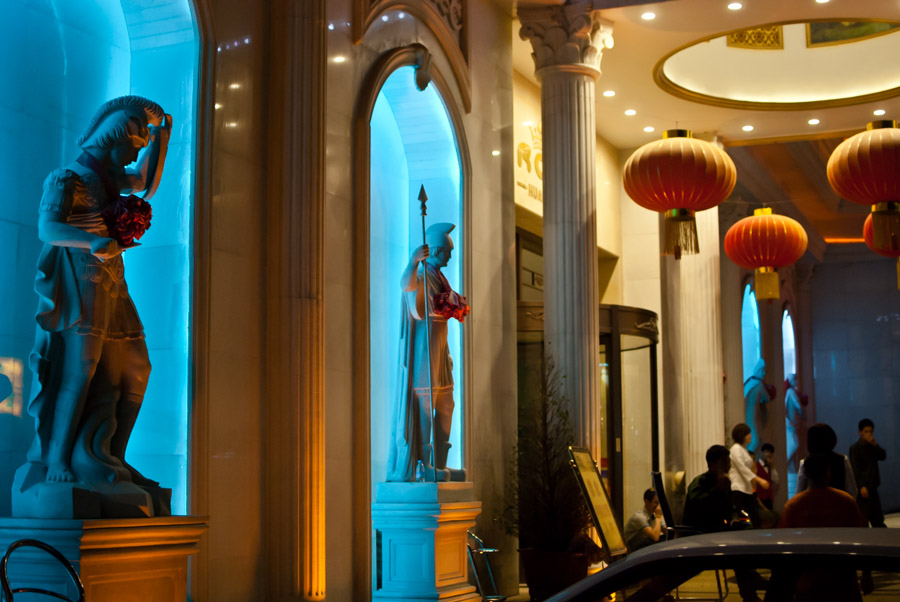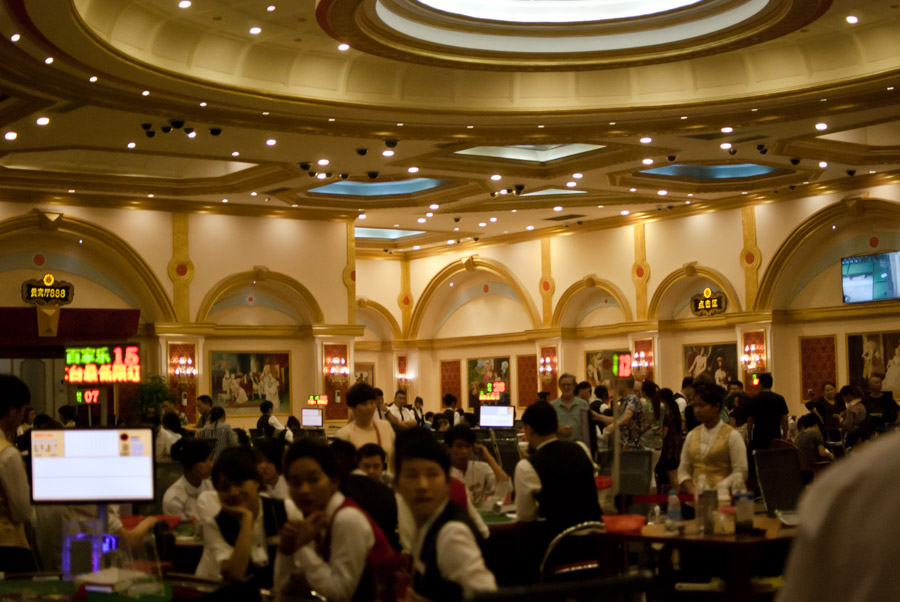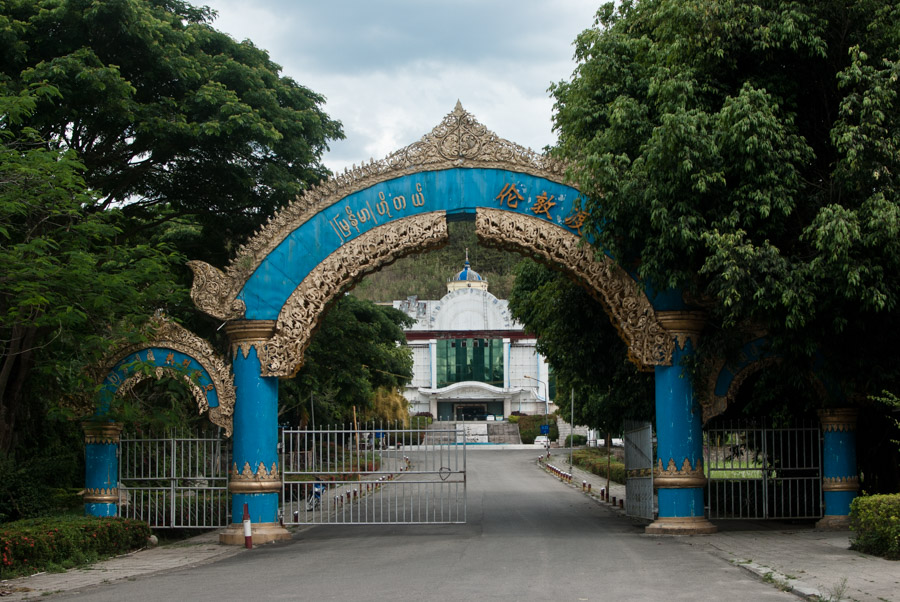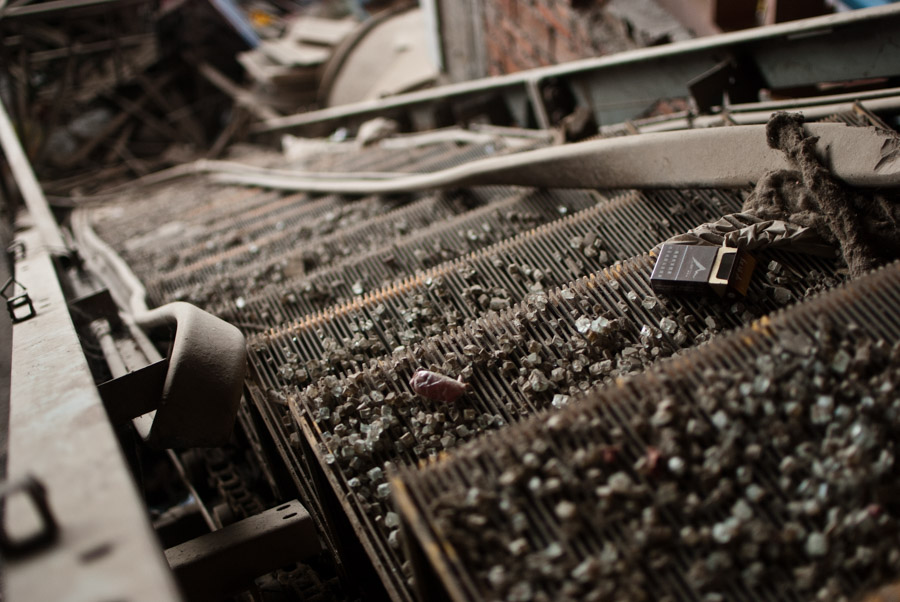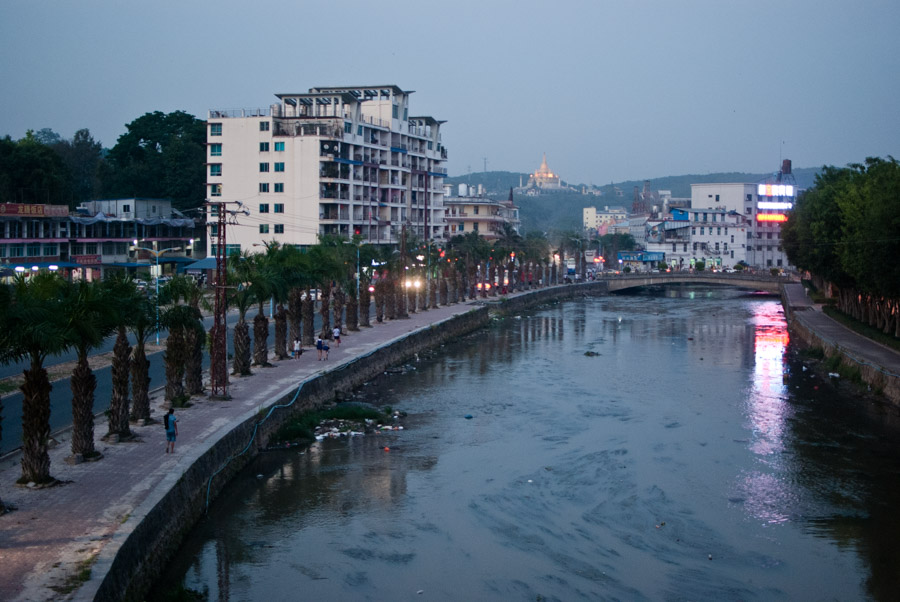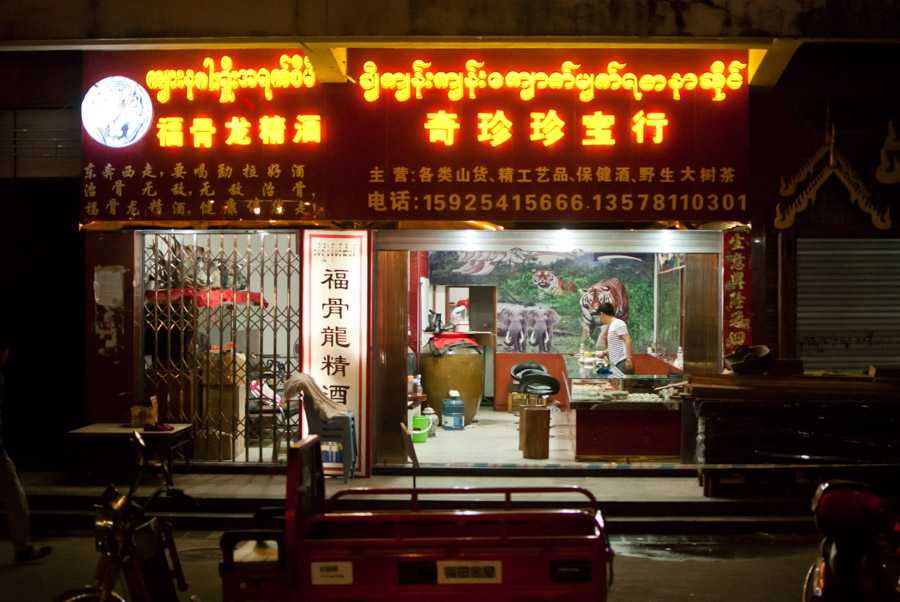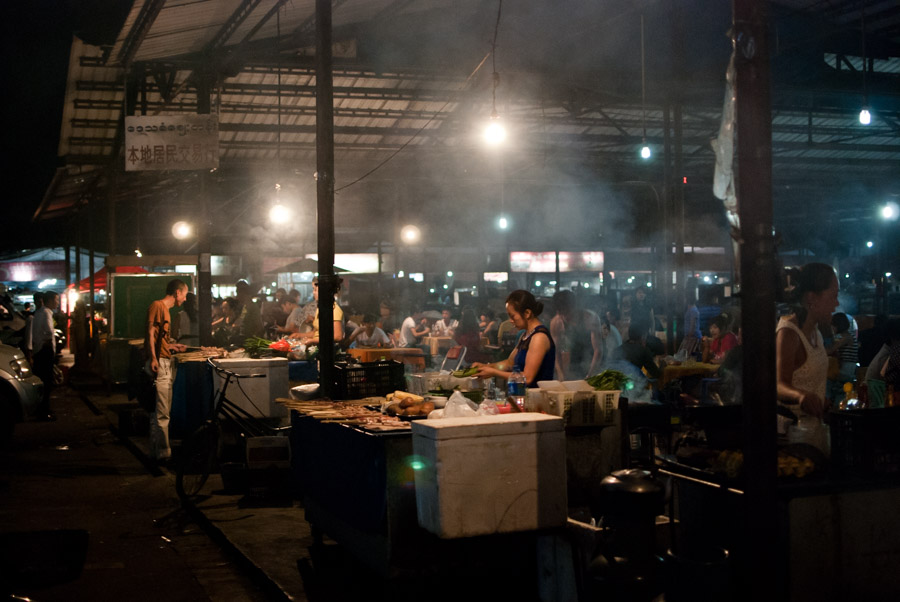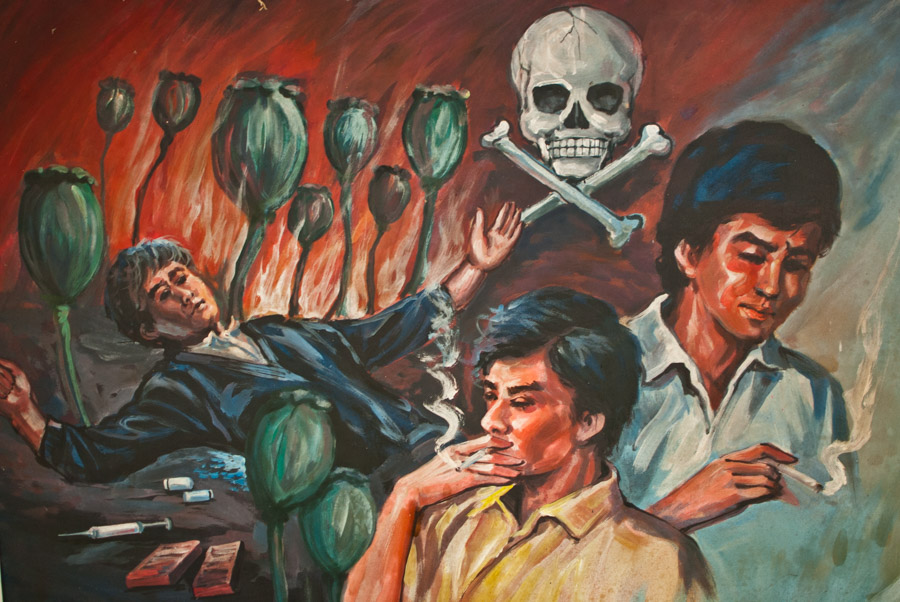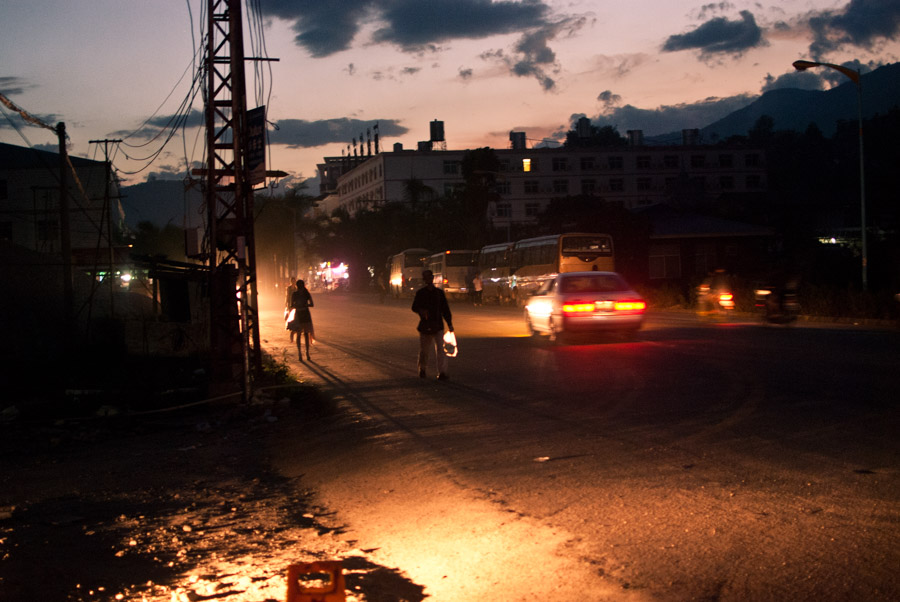In eastern Myanmar, just a stone’s throw from the Chinese border, lies a den of drug smuggling, gambling, and vice.
MONG LA, Myanmar — At first glance, it could be any dingy border town in China. Much of the population seems to speak Mandarin, the currency of choice is Chinese yuan, and it runs on Chinese cellphone networks. The kitschy, neon clock tower in the center of town even shows Beijing time — an hour and a half ahead of Myanmar.
But it isn’t long before Mong La’s “special” features become apparent. At the Caixin Hotel, the stained hallways are littered with plastic cards advertising the services of prostitutes, some as young as 15. The cable connection features round-the-clock Japanese pornography, while bedside advertisements hawk sex workers billed as “Burmese girls” and “Vietnamese younger sisters.” While vice is not uncommon in China, Mong La makes little attempt to hide it. At one bustling eatery in the center of town, a Chinese madam in a tight, brown dress approached my table and offered me two shy-looking women who appeared to be in their early 20s. “Do you want younger?” she asked. “I have younger.”
Mong La is the largest town in Special Region No. 4, a 1,910-square-mile crescent of autonomous territory in Myanmar’s eastern Shan state. For more than two decades, the National Democratic Alliance Army (NDAA), the militia that runs this tiny Golden Triangle fiefdom, has survived by creating a settlement of gambling halls, low-rent hotels, and brothels. Mong La’s biggest draw is its 24 nearby casinos, which operate 24/7, attracting a steady stream of visitors from mainland China, where gambling is banned, and from the rest of Myanmar — where gambling is also against the law.
Abraham Than, 88, a retired bishop who lives next to the Catholic church overlooking town, first moved to Mong La in 1969 from Taungoo in central Myanmar, and has seen it transformed into a Chinese satellite. “When I arrived here it was all Shan farmers,” he said. “There were no houses, no buildings, nothing. During these last four, five years it has become a Chinatown. Mong La, Chinatown!”
The anything-goes ethos of Mong La hints at the broader challenges Myanmar’s government faces in securing its borderlands — a patchwork of ethnic rebel zones and warlord statelets that have eluded central control since the country’s independence in 1948. One of the smaller of Myanmar’s estimated 30-plus ethnic armed groups, the NDAA is led by the warlord Sai Leun (aka Lin Mingxian), who broke away from the Communist Party of Burma (CPB) when it collapsed in 1989. Like other factions of the CPB, the NDAA cut a deal with the military junta in Yangon, promising to end the insurgency in exchange for autonomy and lucrative business concessions, including control over the opium trade in the region of Mong La, where many of his fighters settled.
“It’s like a vacant place for law enforcement, so you can basically do anything,” Wang said.
In the mid-1990s, after coming under strong Chinese and U.S. pressure to stem the flow of drugs from the region, the NDAA announced a crackdown and in 1997 declared itself “opium-free.” That year it even built a museum in Mong La to commemorate the achievement, a musty building featuring photos of the drug-burning ceremonies and other anti-narcotics propaganda. In March 2000, the U.S. State Department was satisfied enough to report that Leun had “successfully rid his area of opium cultivation.” One senior NDAA official, who spoke on condition of anonymity, said, “There is no more opium; it is guaranteed.” The official said that most of the region’s revenue comes not from drugs or gambling, but from Chinese plantations of banana, rubber, and corn. “Go around and see,” he said, “it’s all green, all rubber plantations up to the Mekong River.”
But some observers remain less convinced. Paul Keenan, a researcher at the Burma Center for Ethnic Studies in Chiang Mai, Thailand, said that while opium cultivation may have ceased in Special Region No. 4, it was hard to believe that there were no other drugs coming from the area, especially given the boom in methamphetamine production in eastern Myanmar over the past decade. “It just makes a lot of sense that they would continue to do it, because it’s the most lucrative thing,” Keenan said.
Special Region No. 4 has its own military force, a 2,500-strong army of ethnic Shan and Akha youths, but it’s unclear exactly what laws apply in the area. While Beijing has pressured the NDAA to shut down the casinos and crack down on illegal border crossings, businessmen and county-level authorities in China’s nearby Yunnan province also profit from Mong La’s gambling and black marketeering and do little to enforce Chinese laws, said Wang Bangyuan, a public health specialist with extensive experience working in the Myanmar-China border region. “It’s like a vacant place for law enforcement, so you can basically do anything,” Wang said.
There have been challenges, of course. A decade ago, Beijing intervened and forced local authorities to shut down the casinos, turning Mong La into a ghost town overnight. In response, the NDAA shifted the casinos to a village 10 miles to the south, and to evade Chinese border checks, many gamblers now cross into Mong La illegally, via dirt tracks that connect it to the Chinese village of Manzhang. (A return trip by moto-taxi cost me about $30.) In the casino area, behind the blazing neon facades of establishments like the Royal Casino and Le Lisboa, hundreds of Chinese gamblers crowd around smoky tables, some wagering thousands of dollars on every turn of the cards. Other players with headsets place bets on behalf of gamblers watching via video feed from Kunming, Guangzhou, or Beijing.
In addition to drawing probably thousands of gamblers per month, the region’s porous border with China has created lucrative smuggling routes for drugs and endangered animals. At Mong La’s open-air market,an asphalted expanse ringed by palm trees and Sichuanese restaurants, traders openly sell freshly killed muntjac deer and the pelts of endangered small cats. Restaurants on the main dining strip specialize in rare wild animals — owls, monkeys, and pangolins — which are displayed in a miserable-looking caged menagerie on the pavement. At Xingshi Restaurant, endangered soft-shell turtle was available for just under $80 a pound; a waitress offered me the more budget choice of asmall water monitor lizard for $48. Across the road, upmarket wildlife boutiques staffed by chain-smoking Chinese men sell tiger and ivory products — including entire elephant tusks — to cashed-up gamblers. Based on the high turnover, business does seem to be thriving, said Vincent Nijman, a zoologist from Oxford Brookes University who has conducted extensive fieldwork in Mong La.
“Strongmen with large armies that are engaged in business are more predictable than rebel groups fighting for political reasons.”
The challenge in stemming the region’s sanctioned lawlessness, analysts say, is that unlike most of Myanmar’s armed groups, the NDAA has no discernible political agenda, nor any aspiration to ethnic self-determination. “They don’t really want any political gains,” said Keenan. “At this moment, it’s about business, and survival.” In this, the NDAA has a powerful ally in the United Wa State Army (UWSA), Myanmar’s largest armed rebel group, whose main territory borders the Mong La region to the north. Led by Bao Youxiang, another reclusive former CPB commander, the UWSA maintains a standing army of at least 20,000 men and has long been considered one of the largest drug-producing syndicates in Myanmar.
Since 2009, when the Myanmar military dispatched troops to occupy Kokang, another “special region” in northern Shan state, the UWSA has stationed more than 1,000 soldiers in the Mong La area, as a hedge against any armed challenge by the Myanmar military. In late 2011, the UWSA and NDAA renewed their cease-fire agreements with Naypyidaw, cementing the autonomy they have enjoyed since 1989.
Even as the Myanmar government pushes forward with negotiations for a nationwide cease-fire with the country’s ethnic rebel armies — the second draft of an agreement was finalized during talks in May — in places like Mong La a lucrative status quo persists. David Mathieson, a researcher at Human Rights Watch, said the current situation in Mong La was a perfect example of what writer Kevin Woods has described as “ceasefire capitalism” — the Myanmar military’s strategy of turning restive rebels into pliant businessmen. “They don’t have the capacity to control all these borderlands, and so they need to cut deals with local strongmen,” he said. “Strongmen with large armies that are engaged in business are more predictable than rebel groups fighting for political reasons.”
Mathieson said officers in the Myanmar military, like local government officials in China, also benefit from this organized chaos by levying lucrative taxes on the flow of goods throughout the border region, and even getting involved in business for themselves. As long as this political and economic logic prevails, Mong La’s casino barons and rebel leaders, as well as the Myanmar military, will all continue to turn a steady profit. “If they weren’t benefitting financially, then it wouldn’t be an acceptable situation,” Mathieson said. “They benefit from that kind of disorder.”
Published by Foreign Policy, July 30, 2014


